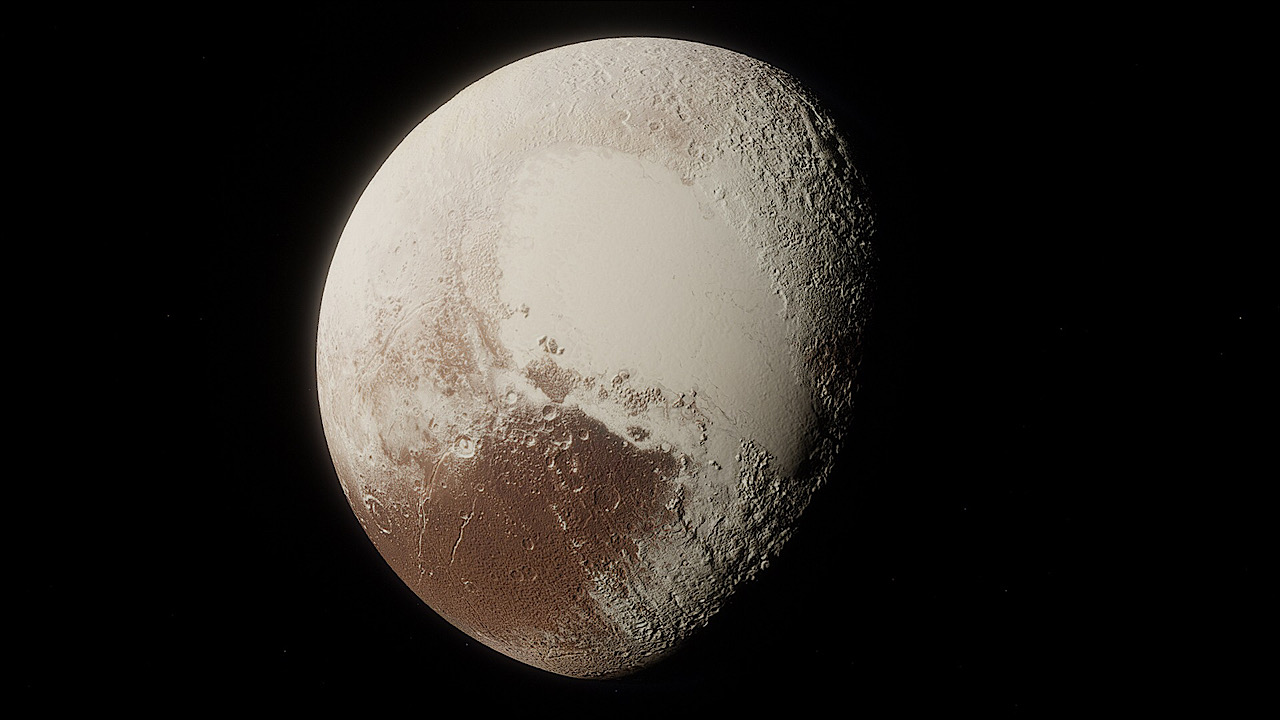A totally unusual world wanders in the strange darkness at the very edge of the solar system, far from the warmth and light of the sun. According to the recent study, Pluto has terrain carved out by ice volcanoes unlike any other planet in the solar system. Slush has risen from below the surface of Pluto to the southwest of the Sputnik Planitia, forming icebergs up to 7 kilometers (4.3 mi) high.
Huge hills with hilly flanks dominate one of the zones with few impact craters. Similar features exist nowhere else in the solar system that has been observed.
According to a team of researchers led by planetary scientist Kelsi Singer of the Southwest Research Institute: “The presence of these large structures implies that Pluto’s inner structure and development either allow for better heat storage or more general heat than was expected before New Horizons.”
Ice volcanoes do not erupt with hot molten lava, but erupt with muddy water slurries of volatiles such as ammonia and methane. They freeze and build surface monuments after appearing in frozen air above Earth, similar to how lava can produce volcanic mountains and calderas, except colder.
ALSO SEE: Asteroid bigger than the Taj Mahal to hit Earth on April 1? Here’s everything you need to know
When the New Horizons mission made its epic flight to our solar system’s former eighth planet in 2015, the first glimpse of ice volcanoes, known as cryovolcanism, was observed. Never before have researchers had such an abundance of information about the largest known inhabitant of the Kuiper Belt; and, not far from the heart-shaped flatlands of the Sputnik Planitia, several aspects stood out as extremely fascinating.
Scientists with the New Horizons mission have found evidence that cryovolcanic activity — ice volcanoes — most likely created some of the unique structures on Pluto not yet seen anywhere else in the solar system. Details: pic.twitter.com/vAPwreCHf2
— NASA Solar System (@NASASolarSystem) March 29, 2022
NASA found “ice volcanoes” on ex-planet Pluto that spew ice of about the same consistency as toothpaste.
Researchers identified 10 “cryovolcanoes” unlike anything else in our solar system, suggesting Pluto is more “geologically alive” than previously believed. pic.twitter.com/uDYGcy4BJf
— AJ+ (@ajplus) March 29, 2022
Based on the reportsWright Mons and Piccard Mons were tentatively recognized as ice volcanoes, huge mounds with deep holes in their cores, similar to volcanic structures found elsewhere in the solar system. Singer and colleagues later found that the elevations of the topography can look more dramatic than they are because of the oblique lighting at the terminator (the line that distinguishes day and night), which somewhat obscures the problem.
ALSO SEE: Sun explosion! A huge wave of geomagnetic storm from the sun to hit Earth on March 31
It must also have happened very recently in the history of the dwarf planet. This is because the side of Wright Mons has only one crater, meaning it hasn’t really had that much time to get pockmarked and damaged from repeated impacts.
Several planets in the solar system, including the dwarf planet Ceres, Saturn’s moon Titan, Jupiter’s moon Europa, and even Pluto’s moon Charon, contain features that resemble ice volcanoes. However, because there are no processes on Earth comparable to cryovolcanism, it can be difficult to identify accurately.
Cover Image: Pixabay

